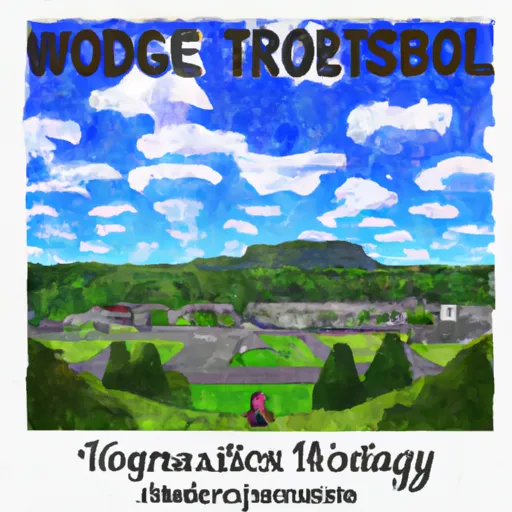-
 Snoflo Premium
Snoflo Premium
Get unlimited access to all our content
With no Ad interruptions! - Start Your Free Trial Login with existing account
Monterey
Eden Index
Climate
7.3
•
Recreation
0.7
•
Community
1.0
•
Safeguard
3.4/10

Monterey, Tennessee is a charming town located in Putnam County, nestled in the Cumberland Plateau region. Known for its pleasant climate, Monterey experiences four distinct seasons. Summers are warm with average temperatures ranging from the low 70s to mid-80s Fahrenheit, while winters are mild with temperatures averaging in the 30s and 40s. Spring and fall bring comfortable temperatures, making outdoor activities enjoyable year-round.
Monterey is blessed with abundant water resources, thanks to its proximity to the Cumberland River and various creeks that flow through the area. These hydrological constituents provide excellent opportunities for fishing, boating, and kayaking. The Cumberland River is renowned for its diverse fish population, including bass, catfish, and panfish, attracting anglers from all over.
Outdoor enthusiasts will find plenty of recreational opportunities in Monterey. The area is home to several state parks and natural areas which offer scenic hiking trails, camping facilities, and wildlife observation. Standing Stone State Park, located a short distance away, encompasses over 8,000 acres of forested hills, providing visitors with breathtaking views and numerous outdoor activities.
Overall, Monterey, Tennessee presents an inviting climate, abundant water resources, and a range of outdoor recreational opportunities, making it an ideal destination for nature lovers and adventure seekers.
What is the Eden Index?
The Snoflo Eden Index serves as a comprehensive rating system for regions, evaluating their desirability through a holistic assessment of climate health, outdoor recreation opportunities, and natural disaster risk, acknowledging the profound impact of these factors on livability and well-being.
Climate Health Indicator (CHI): 7.3
Monterey receives approximately
1535mm of rain per year,
with humidity levels near 84%
and air temperatures averaging around
13°C.
Monterey has a plant hardyness factor of
6, meaning
plants and agriculture in this region thrive during a short period during spring and early summer. Most
plants will die off during the colder winter months.
By considering the ideal temperature range, reliable water supplies, clean air, and stable seasonal rain or snowpacks, the Climate Health Indicator (CHI) underscores the significance of a healthy climate as the foundation for quality living.
A healthy climate is paramount for ensuring a high quality of life and livability in a region, fostering both physical well-being and environmental harmony. This can be characterized by ideal temperatures, reliable access to water supplies, clean air, and consistent seasonal rain or snowpacks.
Weather Forecast
Streamflow Conditions
Upper Cumberland
Area Rivers
Upper Cumberland
Snowpack Depths
Upper Cumberland
Reservoir Storage Capacity
Upper Cumberland
Groundwater Levels
Recreational Opportunity Index (ROI): 0.7
The Recreational Opportunity Index (ROI) recognizes the value of outdoor recreational options, such as parks, hiking trails, camping sites, and fishing spots, while acknowledging that climate plays a pivotal role in ensuring the comfort and consistency of these experiences.
Access to outdoor recreational opportunities, encompassing activities such as parks, hiking, camping, and fishing, is crucial for overall well-being, and the climate plays a pivotal role in enabling and enhancing these experiences, ensuring that individuals can engage in nature-based activities comfortably and consistently.
Camping Areas
| Campground | Campsites | Reservations | Toilets | Showers | Elevation |
|---|---|---|---|---|---|
| Skull Island - Chickamauga Lake | None | 717 ft | |||
| Chester Frost Park | None | 750 ft | |||
| Coosa River County Park | None | 591 ft | |||
| 56 | 886 ft | ||||
| VFW County Park | None | 1,096 ft | |||
| John Tanner State Park | None | 1,094 ft | |||
| Harrison Bay State Park | 149 | 721 ft | |||
| Tally Valley County Park | None | 1,117 ft | |||
| Possum Creek RV - Chickamauga Lake | None | 774 ft | |||
| James H Sloppy Floyd State Park | None | 720 ft |
Nearby Fishing
Nearby Ski Areas
Catastrophe Safeguard Index (CSI):
The Catastrophe Safeguard Index (CSI) recognizes that natural disaster risk, encompassing floods, fires, hurricanes, and tornadoes, can drastically affect safety and the overall appeal of an area.
The level of natural disaster risk in a region significantly affects safety and the overall livability, with climate change amplifying these risks by potentially increasing the frequency and intensity of events like floods, fires, hurricanes, and tornadoes, thereby posing substantial challenges to community resilience and well-being.
Community Resilience Indicator (CRI): 1.0
The Community Resilience Indicator (CRI) recognizes that education, healthcare, and socioeconomics are crucial to the well-being of a region. The CRI acknowledges the profound impact of these elements on residents' overall quality of life. By evaluating educational resources, healthcare accessibility, and economic inclusivity, the index captures the essential aspects that contribute to a thriving community, fostering resident satisfaction, equity, and social cohesion.

